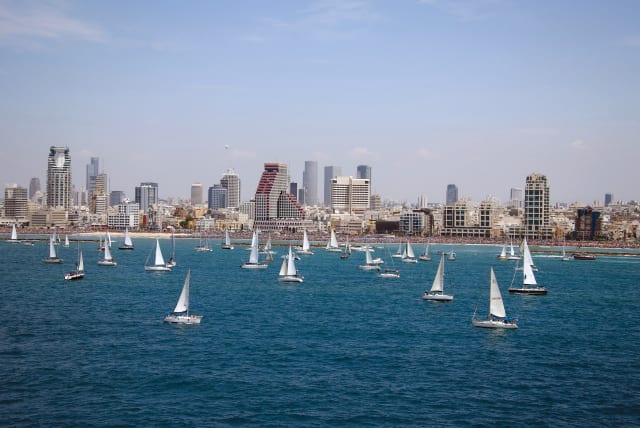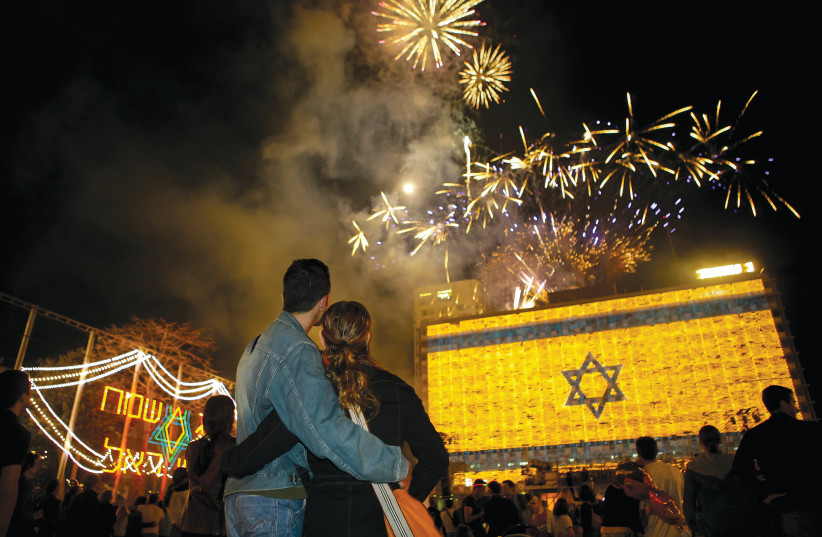Stories behind the names of Tel Aviv streets explored in new book

Together with a written biography of that person of influence, there are stunning pictures of the site in its infancy and how it looks today.
While the streets of most Israeli cities are named after heroes and leaders, with Allenby, Ben Yehuda, Trumpeldor, Ben-Gurion, Herzl, Arlosoroff, Bialik and Rothschild in the forefront, each municipality also selects its own local pioneers and founders, reflecting the biblical and modern history of that town.
Did you know that Shalom Shabazi was the Shakespeare of Yemen, or that Aharon Chelouche had a vineyard in Neve Zedek? That Haim Bograshov was the first principal of the Herzliya Hebrew High School established in 1904, or that Hannah Semer (Zemer) was the first female editor-in-chief of Davar?
50 of Tel Aviv’s Intriguing Streets is a beautifully produced and illustrated coffee-table book. Together with a written biography of that person of influence, there are stunning pictures of the site in its infancy and how it looks today. One often wishes one could turn back the clock to the original town plan with its quiet empty streets and its eclectic architecture.
The book is the combined artistic effort of photo-journalist Ziv Koren who began his award-winning career in the IDF; New York-born Miryam Sivan, a writer of fiction and non-fiction who teaches literature and writing at Haifa University; and Ellin Yassky, a specialist in artbook publishing, a PhD from New York University in museum administration, now living in Tel Aviv.
The inspiration for the book came from Stephen Saft, an American Jew who is a regular visitor to Tel Aviv as a tourist and businessman. He collaborated on this project with his late wife, Marcia Saft, and the book is dedicated to her.
In 1909, Ahuzat Bayit was established on the sand dunes north of the overcrowded Jaffa. In 1910, Menachem Sheinkin proposed changing the name of this small enclave of six streets around Rothschild Boulevard to Tel Aviv, inspired by Herzl’s 1902 Altneuland. In fact Herzl’s “Old-New Land” referred to an ancient city called Tel Aviv (Ezekiel 3:15.)
The vision of the new city was to provide space and light, homes with gardens, culture and leisure on tree-lined boulevards and beach-front. Patrick Geddes, Scottish urban planner, designed the streets in a grid, from west to east in 1925. To this day it is far easier to drive or walk through the center of Tel Aviv, albeit the traffic, than it is to find one’s way in the hilly winding streets of Jerusalem or Haifa. The object of the grid was to give light and sea breezes throughout the residential streets. Unfortunately, the concrete jungle of high-rise hotels facing the beach on Hayarkon Street has partially destroyed that vision.
UNESCO recognized the White City as the world’s largest collection of Bauhaus and International Style architecture. This writer disputes this claim, as history shows that the first garden city was built around the old Technion building, a Baerwald gem, on Haifa’s Hadar. (See Bauhaus on the Carmel by Prof. Gilbert Herbert)
Nevertheless, Tel Aviv architecture represents its history with the original eclectic style that spanned the Ottoman Empire, the Mandate, the International Style and the Brutalists, an example being the Municipality on Rabin Square.
The city cultural committee chose the street names, but of course politics influenced those choices as well as those seeking posterity. One of the more modern street names is Shlomo Lahat, who coined the phrase: the city that never stops. His achievement was to landscape and develop the promenade on the beach that for many years was shabby and neglected.
Iconic sites have changed over the years. Dizengoff Square named after the first mayor of the city provided shade and a meeting place in the center of one of the busiest streets in 1938. Lifting it above ground level removed its ambiance, caused traffic chaos and was restored to ground level with much applause in 2018.
Prior to the dream of the founders of Tel Aviv, German Christian Templers settled in Palestine in the 1880s, in Sarona next to what is now the Azrieli Center, in Jerusalem, in Bethlehem Hagalilit, Haifa, and other locations. Even in this prestigious volume there was the common typo spelling Templer with an “a,” as in the Crusaders Templars.
As the city expanded, Jaffa, the first port town of Eretz Yisrael and the first station on the railway to Jerusalem, was incorporated into Tel Aviv, with its art galleries, restaurants and markets, making it a popular tourist attraction.
The Yarkon River was the former boundary of Tel Aviv but now it merges with the prosperous suburbs with its shopping malls and high-rise buildings, Tel Aviv University and the Haaretz Museum, replacing the original citrus groves and fields.
The center of Tel Aviv, as seen in these beautiful pictures, is still known for its shady streets and small parks and gardens. Many of the old buildings have been renovated, and the historic early neighborhoods of Florentin and Neve Zedek have been restored with trendy shops and cultural centers.
It is worth reading this fascinating book to learn the stories of the builders of the city and the state – and to learn about their connection to this thriving city. ■
50 Of Tel Aviv’s Most Intriguing Streets: The Lives Behind the NamesPhotographs by Ziv Koren; Text by Miryam Sivan; Curated by Ellin YasskyGefen Publishing House, 2022.136 pages, $44.95
Jerusalem Post Store
`; document.getElementById("linkPremium").innerHTML = cont; var divWithLink = document.getElementById("premium-link"); if (divWithLink !== null && divWithLink !== 'undefined') { divWithLink.style.border = "solid 1px #cb0f3e"; divWithLink.style.textAlign = "center"; divWithLink.style.marginBottom = "15px"; divWithLink.style.marginTop = "15px"; divWithLink.style.width = "100%"; divWithLink.style.backgroundColor = "#122952"; divWithLink.style.color = "#ffffff"; divWithLink.style.lineHeight = "1.5"; } } (function (v, i) { });

